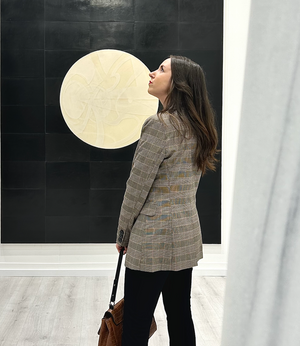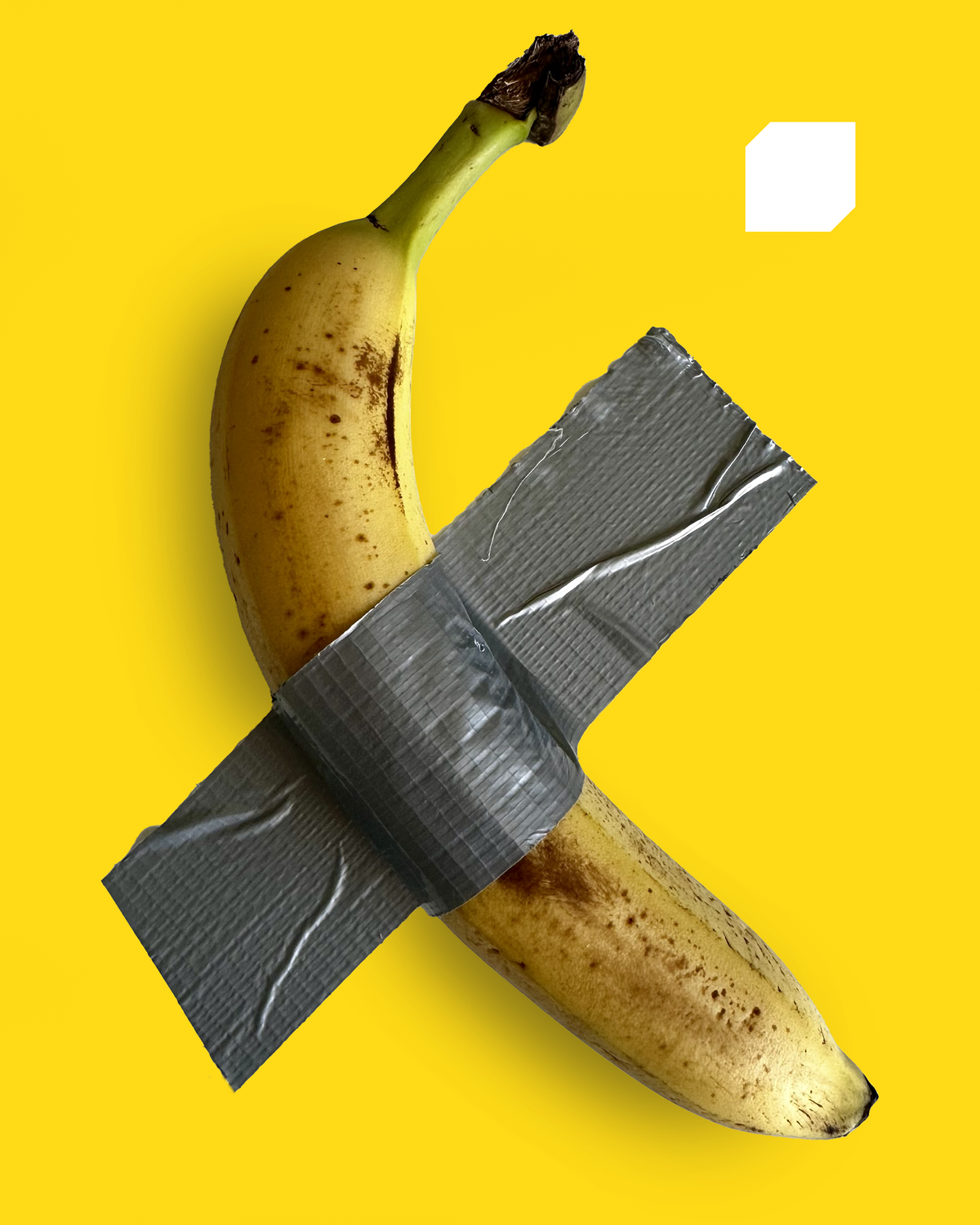So you’re about to curate your first art show and are on the hunt for some tips? To ensure the success of an art exhibition it is essential to follow some practical steps. Curating an art event involves more than just selecting the works on display. There are several other key aspects you should pay attention to when creating, setting up, and communicating about your exhibition.
This article gives an overview about how to curate a successful art exhibition through eight steps.
How to curate an art show in 8 steps
1)Choose a theme and a title
An art exhibition is not only about displaying an artist's finest works. Rather, it is the result of thoughtfully selecting works connected by a common theme, thus creating a coherent collection.
In the case of a solo show, the artist's portfolio is carefully evaluated to determine the number and type of works to be exhibited. For group exhibitions, which are often dedicated to emerging artists, the decision to adopt a theme is even more important for promotional purposes as it will be the main attraction for the public.
The title of an art exhibition plays a crucial role in the promotion of an event, as it provides the first opportunity to stimulate the interest of the public and critics. It must be catchy, easy to remember, and represent the main theme in an evocative way.
2)Find the right location
Another fundamental aspect of curating an art show is the choice of the location. It is essential to evaluate the space required for both the artworks and the expected number of visitors.
Depending on the theme of the exhibition, rooms with good natural lighting or high quality artificial lighting will be necessary. You should also think about whether spaces that present interesting architectural and scenographic features or spaces with a minimalist and modern design are a better match.
As an alternative to physical locations, technology has recently made it possible to set up digital shows. There are online platforms that allow curators to organize virtual exhibitions. One such platform is Villume, on which you can select a virtual space from an array of templates and customize the interiors according to your needs.
3)Pick an opening date and set the duration
Once you have selected the theme and location, you will need to focus on the practical aspects of organizing the art exhibition. Select an opening date and time well in advance so that you can book the best venue and give yourself time to manage the invitations and plan the entertainment.
You will also need to set the overall duration of the event, the particular times and days the space is open to the public, as well as establish the prices of tickets and/or the artworks.
Last but not least, make sure to arrange suitable insurance policies to cover the artworks on display and, if the chosen location does not already have one, consider obtaining insurance to cover both the venue and the visitors.
4)Find a sponsor
When searching for a sponsor for an art exhibition it is important to identify those with aligned values. In other words, find all the entities that might be interested in financing the event based on their field of operation or their institutional mission. Compile an exhibition portfolio and leverage your personal contacts.
In order to present your project effectively, you will need to create a sponsorship plan, highlighting all the benefits that the potential sponsor could obtain through financing the exhibition.
5)Advertise the art show
Promoting an art exhibition requires careful consideration of the audience you intend to attract. Exhibitions of famous artists, which usually aim to draw large crowds, require considerable advertising investment. Typically this involves mediums such as press and billboards, together with newsletters and invitations. For shows with a more limited budget, it is preferable to use social media and online promotion tools.
Flyers are good for catching the public's eye and stimulating their participation. Choose an image that reflects the meaning and theme of the exhibition and opt for a simple layout. The flyer should include information such as the date, time, location, any ticket costs, as well as the logos of the organizer and any sponsors.
The press release is another key element of curating an art show. Make sure to include all essential information about the exhibition, and pair the release with high-quality images of the works. Once ready, you can send it via email to a list of journalists, gallery owners, collectors, and critics.
6)Take care of the layout
Getting the layout of the exhibition right is crucial for the success of any art show. First of all, make sure that the arrangement of the works creates a continuous visual flow. Inform visitors if it’s possible to interact with any of the exhibited works, and guide them along the intended path. Write a brief description for each artwork, including the title and the author. It should be understandable even by those who are not familiar with the artist(s) or the theme. Also, consider placing a guest book at the exit. This can be useful for recording participation and gathering contacts.
7)Write an exhibition statement
An exhibition statement is a written overview of the event, usually crafted by the curator or artist. Its purpose is to guide the public through the exhibition's theme, concept, and layout. Write a text that includes details about the participating artist(s), the idea behind the exhibition, the showcased artworks, and the overall message being communicated. The statement is important to provide context and details about the art show, allowing visitors to better engage with the exhibition.
8)Organize the opening
The opening of an exhibition is a key moment to promote the event and should include an introduction that presents the theme of the exhibition and the artists involved.
Consider offering food and drinks if the budget allows. This can greatly increase the success of the show, especially if the exhibition is focused on sales. Also consider arranging some background music, if the space and resources are available.
___________________
The process of curating an art show involves several key steps. From selecting a theme and a title to choosing the right location, setting dates, finding sponsors, and implementing effective promotion strategies. Each of these elements contributes to the success of the exhibition.


